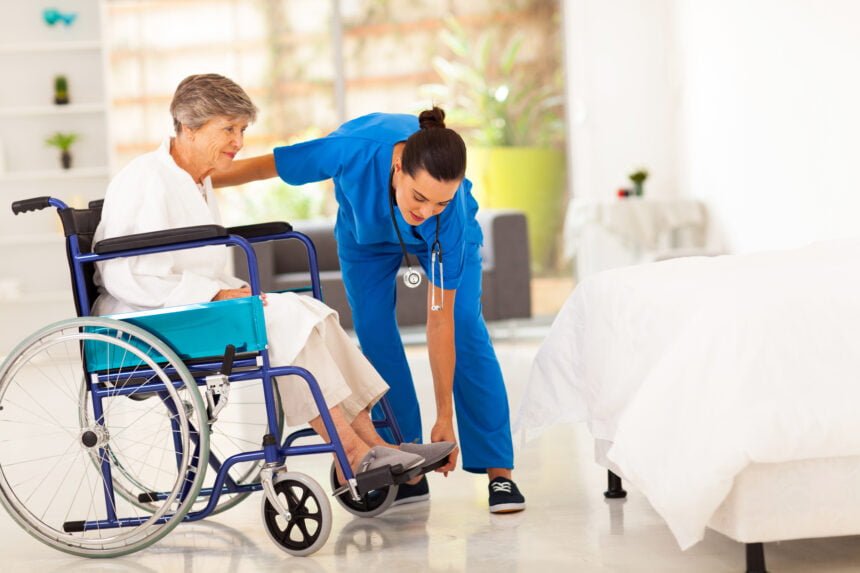Navigating medical care as a wheelchair user can be intimidating and difficult to navigate. Patients often face physical barriers, communication issues, and negative attitudes. But there are resources available to make the process smoother.
For wheelchair users, it’s important to know your rights under the Americans with Disabilities Act (ADA). This law requires healthcare facilities to make reasonable accommodations for people with disabilities. Knowing that you have this protection can help give you confidence when navigating medical care as a wheelchair user. Additionally, many facilities now offer specialized services specifically for people using wheelchairs or other mobility devices.
It is possible to have successful experiences in the healthcare system as a wheelchair user and wheelchair hire – if you know what your rights are and where to go for assistance!
Accessing Medical Care
Accessing medical care is an issue that affects many people, especially those who rely on wheelchairs. No matter what condition they are in, everyone should have access to the best healthcare possible; however, wheelchair users often face challenges when it comes to accessing medical care.
One of the biggest issues is the lack of mobility solutions at health facilities. Without a proper solution in place, a wheelchair user may not be able to get into various areas of the facility or even onto some examination tables. This can limit their ability to receive necessary treatments and prevent them from receiving optimal healthcare.
Thankfully, there are solutions available that can make medical facilities more accessible for wheelchair users. Ramps and lifts are just two examples of how medical providers can address this problem and help ensure individuals with wheelchairs enjoy equal access to healthcare services.
Challenges: Mobility, Adaptations
As technology advances, so too should our understanding and utilization of these tools to ensure that people with physical disabilities have access to the same level of care as anyone else.
The recent global pandemic has highlighted a number of issues regarding mobility for those who require a wheelchair for medical purposes. It’s become clear that much more investment needs to be made in this area in order to develop new and improved adaptations for wheelchairs. This will help individuals retain their autonomy and independence while allowing them to stay safe during the pandemic.
These innovative advancements have already begun making waves in the medical device industry, providing people with physical disabilities greater levels of comfort and convenience when it comes to healthcare services.
Preparing Ahead: Appointments, Needs
Getting prepared ahead of time allows patients to take control of their appointments and have the peace of mind that they are taking advantage of every medical opportunity available. In particular, wheelchairs play an important role in helping with mobility issues so having one ready ahead of time is essential for many people living with disabilities or chronic illnesses.
Being able to prepare for appointments and needs—whether it’s a wheelchair or something else—is essential for anyone who wants to feel confident about their healthcare experience. With a little bit of advanced planning, you can easily find yourself well-prepared for your next appointment!
Finding Resources: Support Groups, Assistive Devices
Whether you or someone you know uses a wheelchair or assistive device, finding the necessary support and resources can be overwhelming. Many organizations provide access to healthcare services and assistive devices that make everyday life easier and more enjoyable.
From online discussion forums to local in-person support groups, individuals with physical disabilities have access to a variety of resources designed specifically for them. Not only do these organizations offer practical advice on using wheelchairs and other mobility devices, but they also allow members of the community to connect with each other for support and camaraderie. Furthermore, many communities now have wheelchair sports teams which offer people an opportunity to get active while making new friends!
Hospital Visits: Accommodations, Staffing
Staffing standards at medical facilities have also increased significantly in recent years. Highly trained nurses, doctors and other personnel are available 24/7 to provide personalized attention and care that meets the unique needs of each individual patient. This means fewer delays when seeking treatment or a diagnosis as well as more effective communication between providers and their patients.
With improved accessibility and staffing resources, hospital visits don’t have to be a stressful experience anymore!
Conclusion: Empowerment for Wheelchair Users
The conclusion of this article is that wheelchair users can take back their power over their own health and wellbeing. By embracing the tools available to them, they can overcome their physical limitations and become more independent in their daily lives. Healthcare professionals are investing in the development of new technologies which make living with a disability easier than ever before.
Wheelchair users have access to a wide range of innovative products such as specialized wheelchairs, ramps, lifts, and other assistive devices that can help them move more freely and safely around the home or office. These products also provide comfort while allowing people with disabilities to reach higher levels of functionality in everyday life. Additionally, the development of new technologies such as smart phone apps allows for remote monitoring so that healthcare professionals can keep track of a patient’s progress from anywhere in the world.

